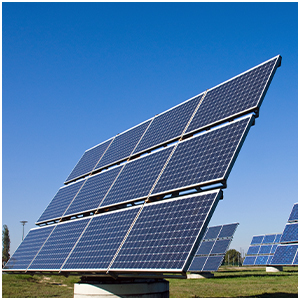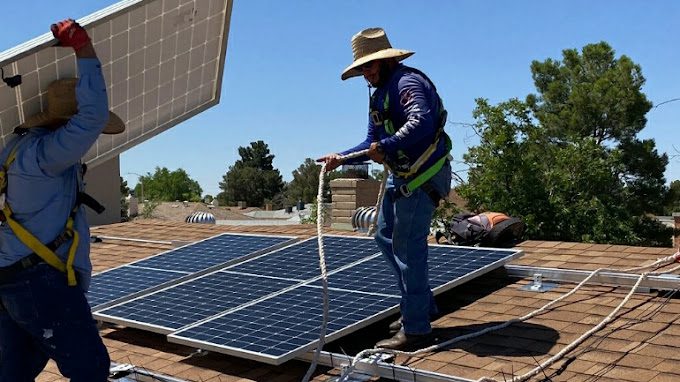Solar Incentives




Our Mission
Our mission is to cultivate Solar Professionals who provide homeowners with accurate information, ensuring no unwelcome surprises emerge.
One thing we strongly oppose is hearing homeowners lament how their solar representative misled them into thinking they would receive a refund on a 30% tax credit when they wouldn’t.
According to solar banks, a staggering 85% of homeowners fail to pay off the 30% tax credit within 18 months. Consequently, most monthly payments increase.
Let’s commit to being transparent professionals and sharing the true facts about solar to prevent industry regulators from impeding our industry’s progress.


Compliance is paramount!
Introducing the Solar Tax Max™ Plan, a strategic initiative devised, meticulously vetted by a panel of Harvard Tax Attorneys and CPAs (Certified Public Accountants). This innovative plan aims to empower homeowners in optimizing solar incentives to their fullest potential.
In essence, the Solar Tax Max™ Plan facilitates homeowners in maximizing their returns from the government for installing solar panels.
Developed by Solar Tax Pros, a renowned solar tax consulting firm, the Solar Tax Max™ Plan is tailored to enable homeowners to leverage additional federal income tax incentives, ranging from 10% to 40%, on top of the standard 30% solar tax credit.
This plan is applicable to new prospects, existing prospects, and past clients who have invested in solar systems within the last three years, extending its reach nationwide, including Puerto Rico, Guam, and the U.S. Virgin Islands.
Core Values
The core ethos of Solar Tax Max™ revolves around assisting homeowners in optimizing their IRS returns for solar investments through a deep understanding of the tax code.
Operationally, the Solar Tax Max™ Plan entails establishing a “Net Meter Agreement,” a contractual arrangement facilitating energy exchange between homeowners and utility companies.



We Are Ready To Provide Solar Energy
Residential Solar Regulations
Commercial Solar Regulations

Solar Tax Max™ Plan
Our Solar Tax Max™ Plan enables residential homeowners to qualify for the incentives typically reserved for commercial entities.
It’s important to note that “commercial solar incentives” do not necessitate installation on a commercial building. Rather, it signifies the use of solar energy in a business context, similar to how residential homeowners might use platforms like Airbnb to rent out their homes as if they were hotels.
Developed by our tax team over a span of 5 years, this plan has been operating seamlessly without any issues.

Key benefits of the Solar Tax Max™ Plan include:

- Deducting solar expenditures from gross income.
- Availing the 30% tax credits at an earlier stage.
- Upcoming: An additional 10% Domestic tax credit.
- Additional tax credits of 10%-20% for Low-Income households.
- Facilitation of tax credit transfers.

FREQUENTLY ASKED QUESTIONS
The 30% Investment Tax Credit Is Calculated Based On Total Solar System Costs.
The Investment Tax Credit Is A Non-Refundable Tax Credit Meaning A Refund Is Only Given If One Is Paying Income Taxes.
- If You Paid Income Taxes And You Have A Credit At The IRS, The IRS Will Refund The Extra Money You Gave Them.
- If You Don’t Use The Entire Tax Credit In The First Year, You Can Use The Remaining Credit Balance Next Year.
- The Tax Credit Balance Will Carry Forward For 20 Years.
Higher Income Taxpayer Example:
A Homeowner Goes Solar And Pays $100,000 For A Solar System In 2023.
The Homeowner Receives A 30% Investment Tax Credit Of $30,000 From The IRS.
The Homeowner Is Married And Earns $100,000 In 2023 And Pays $20,000 In Taxes.
The Homeowner Will Receive A $20,000 Tax Refund.
The Remaining $10,000 Tax Credit Will Carry Forward For 20 More Years.
Lower Income Taxpayer Example:
A Homeowner Goes Solar And Pays $100,000 For A Solar System In 2023.
The Homeowner Receives A 30% Investment Tax Credit Of $30,000 From The IRS.
The Homeowner Is Married And Only Earns $50,000 In 2023 And Pays Just $3,000 In Taxes.
The Homeowner Will Receive A $3,000 Tax Refund.
The Remaining $27,000 Tax Credit Will Carry Forward For 20 More Years.
No Income Taxpayer Example:
A Homeowner Goes Solar And Pays $100,000 For A Solar System In 2023.
The Homeowner Receives A 30% Investment Tax Credit Of $30,000 From The IRS.
The Homeowner Is Married And Only Earns $30,000 In 2023 And Pays Just $0 In Taxes.
The Homeowner Will Receive NO Tax Refund.
The Remaining $30,000 Tax Credit Will Carry Forward For 20 More Years.
The Basic Solar Rules State A Homeowner Can Only Apply The 30% ITC Once The System Is Fully Functional And Producing Energy.
The Advanced Solar Rules Used By Solar Tax Max™ State The 30% ITS Can Be Applied The Year The Solar Contract Is Signed If 5% Of The Solar Project Was Initiated, I.E. Site Survey.
Solar Tax Max™ Advanced Solar Rules Example:
A Homeowner Signs A Contract To Buy Solar On December 20, 2022.
As Long As 5% Of The Solar Project Is Complete In 2022, The Homeowner Can Apply For The 30% ITC For The 2022 Tax Year Only When Using Solar Tax Max™.
Our Extensive Solar Tax Research Would Take Other CPAs Countless Hours Of Expensive Research.
Solar Tax Pros Has Done All The Homework For Your Current Tax Professional To Apply You Your Tax Filing. We Can Also File Your Taxes With Our CPAs.
The Solar Tax Max™ Plan Allows Homeowners To Receive Additional Federal Income Tax Incentives Of 10%-40% Above The 30% Tax Credit.
Depending On How Much Income Tax You Pay, Solar Incentives May Be Fully Collected Back In The First Year For Higher-Income Earners Or A Series Of Years For Lower-Income Earners- Until Realized. Proper Tax Planning Is Required!






